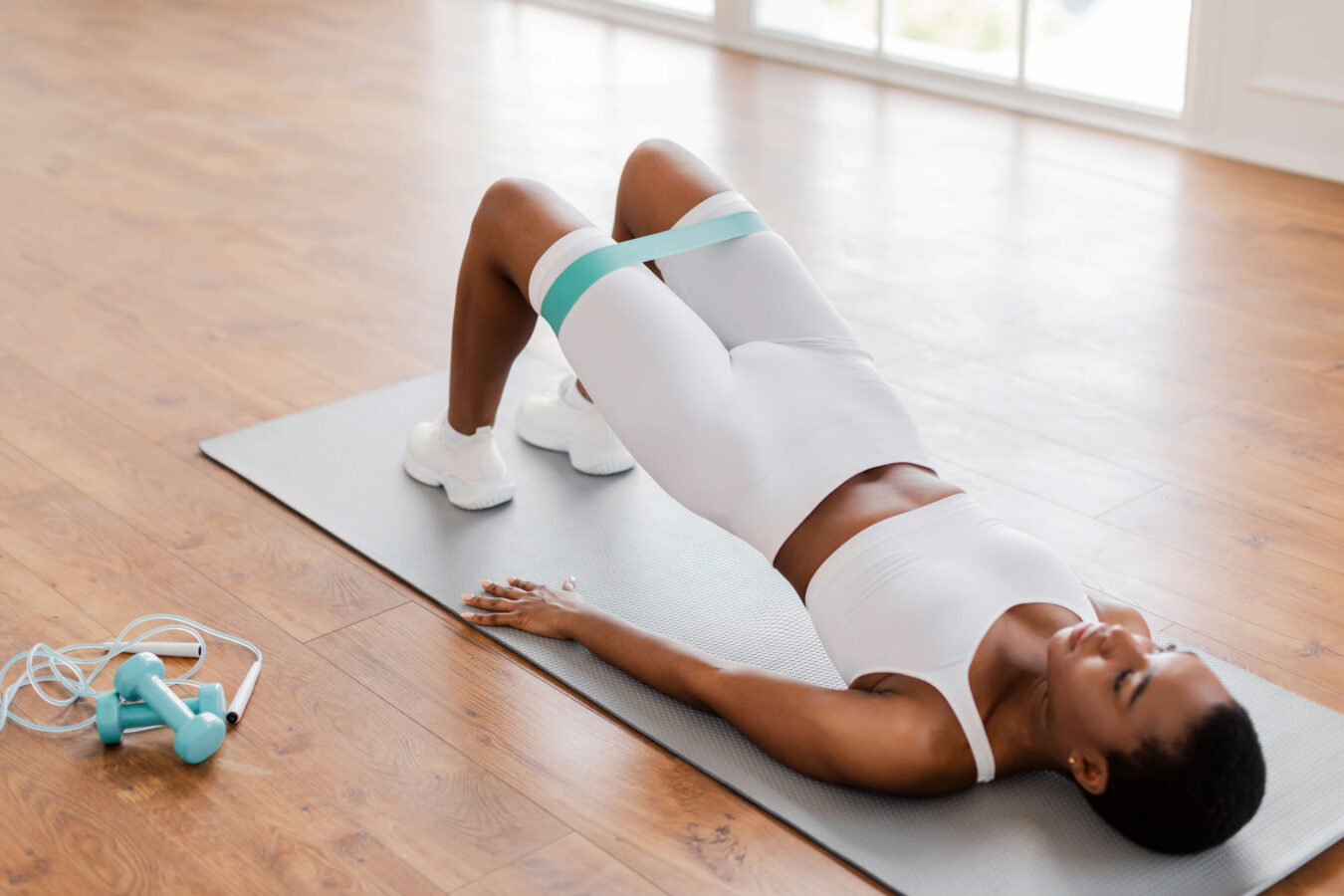
Medically reviewed by Misty Seidenburg
Hip bursitis is a common source of hip pain affecting an estimated 15% of women and 8% of men in the U.S. Pain and swelling in the hip joint associated with bursitis can worsen with movement, making simple tasks like walking and climbing stairs difficult. Fortunately, many people with hip bursitis find relief with conservative, noninvasive treatments.
Benchmark physical therapists have compiled this series of safe and gentle hip bursitis exercises to prevent and relieve pain.
Bursae are tiny, slippery, fluid-filled sacs that rest between bone and other bones, tendons, and muscles around joints. Their job is to reduce friction and tension between these structures and promote smooth, fluid movement throughout the body. Think of them as “bubble wrap” that protects these tissues inside the body.
You can develop hip pain if the trochanteric bursa, which covers the top of the thigh bone, becomes irritated or inflamed.
Although bursitis is a common cause of hip pain, it’s not the only cause. If your pain is intense or persists all the time, it’s essential to seek medical attention. If pain occurs after a fall or other accident, call 911 or go to the emergency room. Otherwise, visit your provider to determine the cause and receive proper treatment.
Joint pain due to bursitis is often felt on the outside of the hip and inside the upper thigh and buttock. In the early phase of bursitis, pain can be intense and sharp while gradually becoming more of an ache as it spreads across larger areas of the hip(s).
Some people with hip bursitis notice pain is worse at night, after standing, or when resting on the affected side. Bursitis hip pain can intensify during activities like walking long distances or climbing stairs, which irritate the bursa.
By strengthening the muscles that stabilize the hips and keeping them long and flexible for greater mobility and range of motion, you ease the stress on joint structures and reduce irritation and inflammation. Try these low-impact stretches and exercises if you have hip pain due to bursitis or want to prevent it.
Note: Always check with your healthcare provider or physical therapist before starting a new exercise regimen. Some movements may not be suitable for all individuals.
The iliotibial band is a thick band of fibers that runs along the outer thigh from the knee to the hip. Stretching the IT band helps keep it from rubbing against the hip joint and inflaming the bursa.
By stretching and strengthening the buttock muscles (glutes) and connecting muscles, you will improve healthy function in the hip joints and reduce strain on the hip bursa.
Clamshell exercises help balance the inner and outer thigh muscles to strengthen and stabilize the hip joints. This is especially beneficial for runners and anyone who participates in activities that involve a lot of running.
This exercise boosts hip mobility and strength, strengthening the hip abductors, which are the muscles on the side of the thigh. This reduces friction on the bursa, reducing pain.
Squats help with hip bursitis by aligning the lower body and stabilizing the hips. Proper form is essential to protect the hips and prevent injuries. To do these safely, engage your core, keep your back straight, and your knees aligned with your ankles. Stick to shallow or partial squats, lowering the body just a few inches.
An evidence-based hip conditioning program is one of many treatments and therapies physical therapy offers to address pain and mobility problems. Therapeutic exercise and manual therapies like massage and manual stretching also help people of all ages and activity levels feel and move better.
Treatment plans for hip bursitis are customized to address your symptoms and limitations. Your therapist tracks your progress with each session and provides home exercise programs to help you recover faster. Find a physical therapy clinic near you or request an appointment online to schedule a hip pain screening today!
